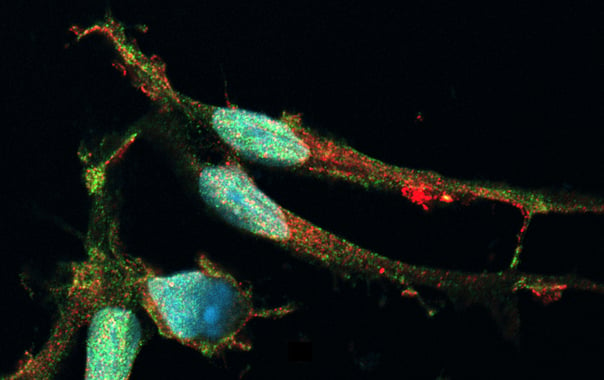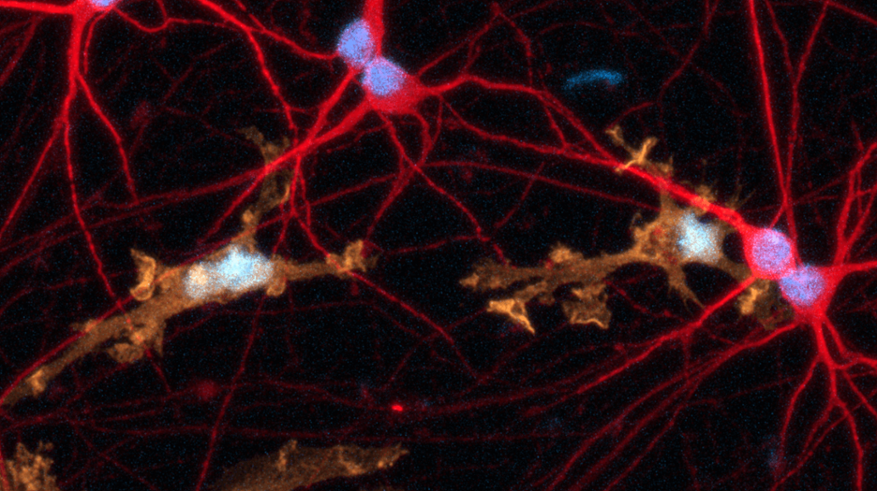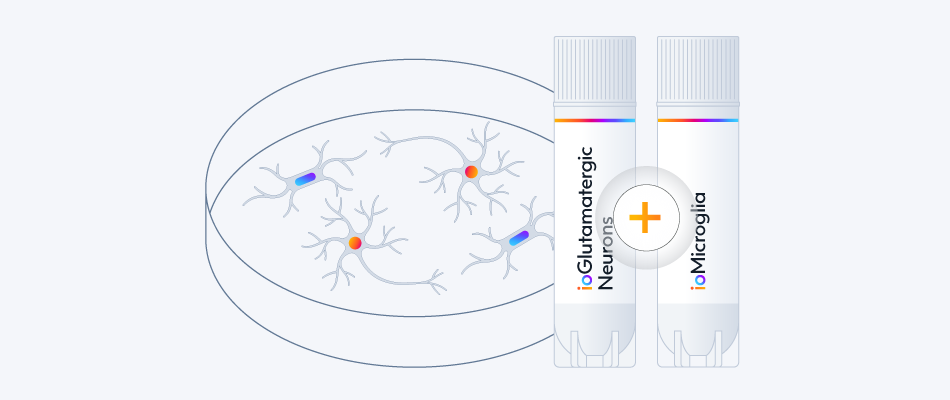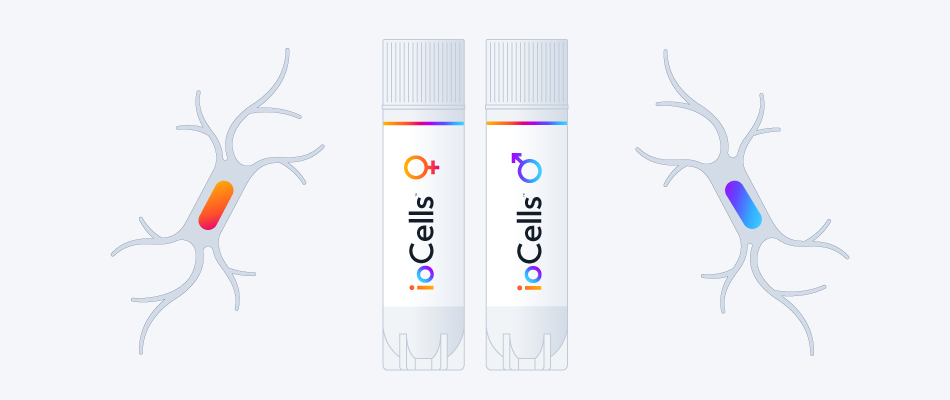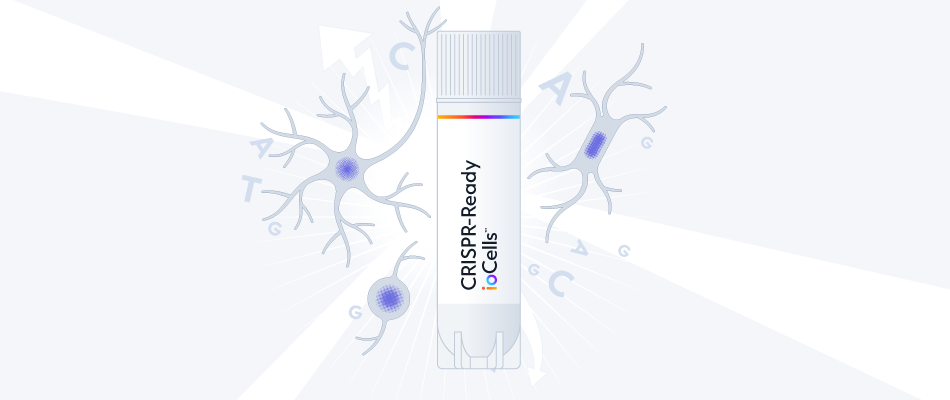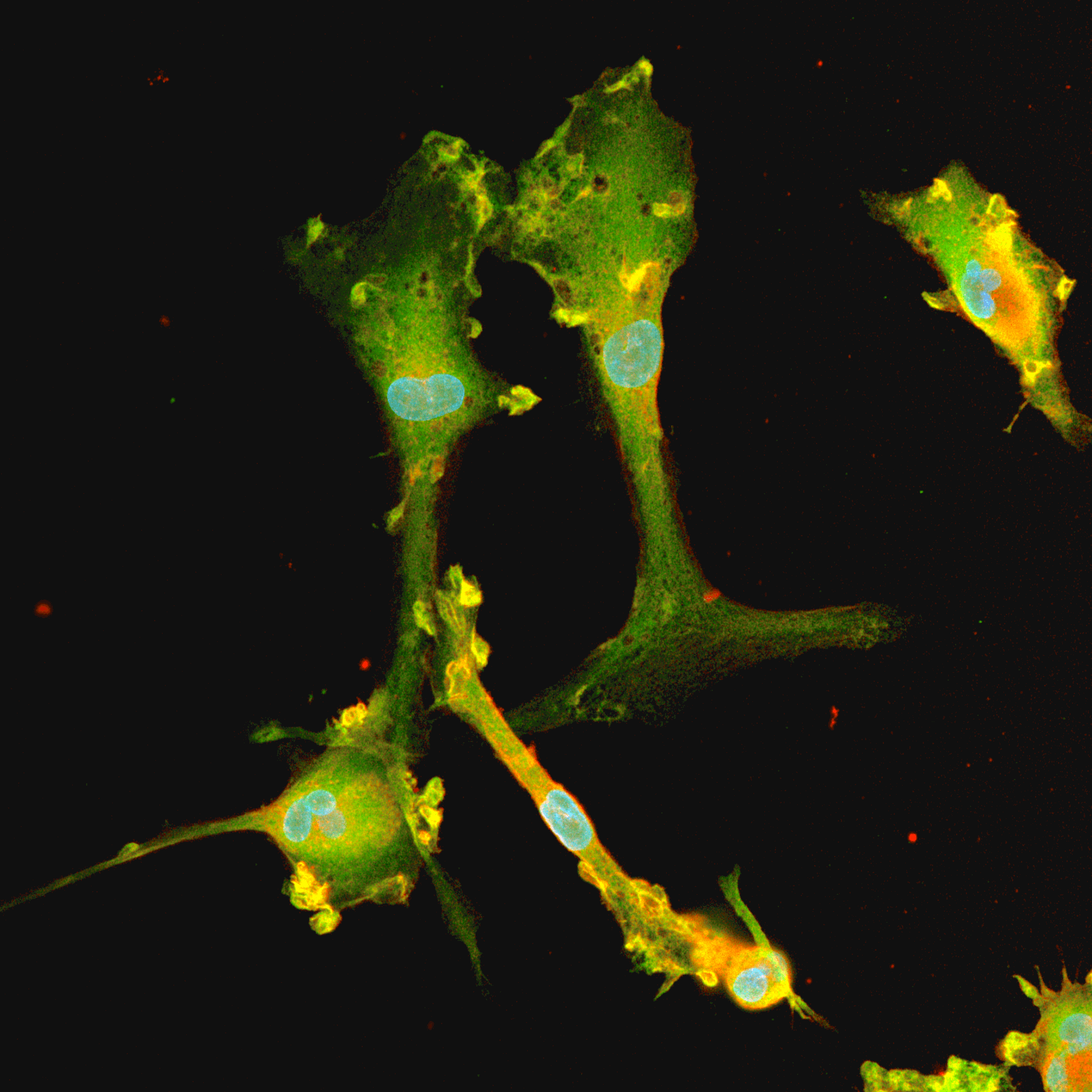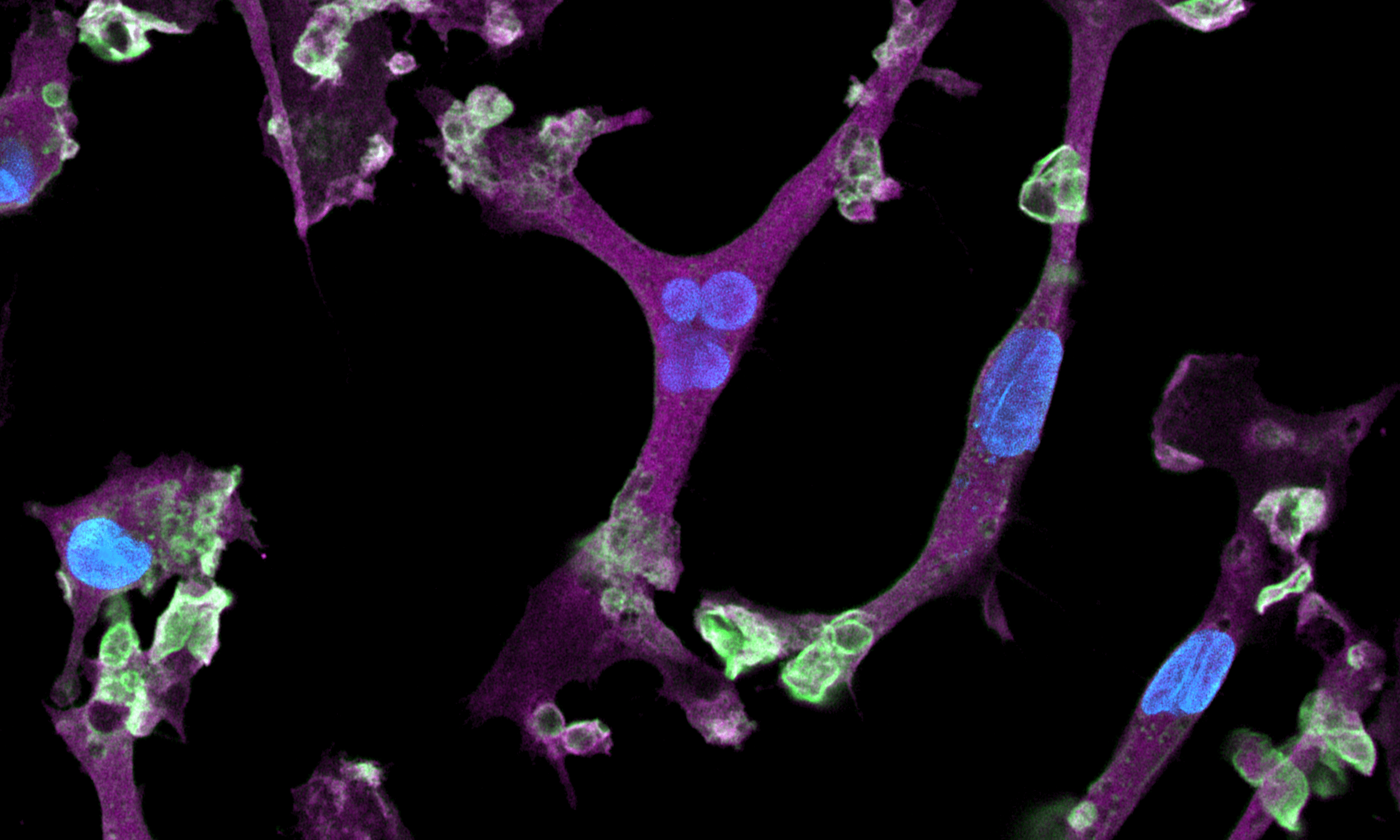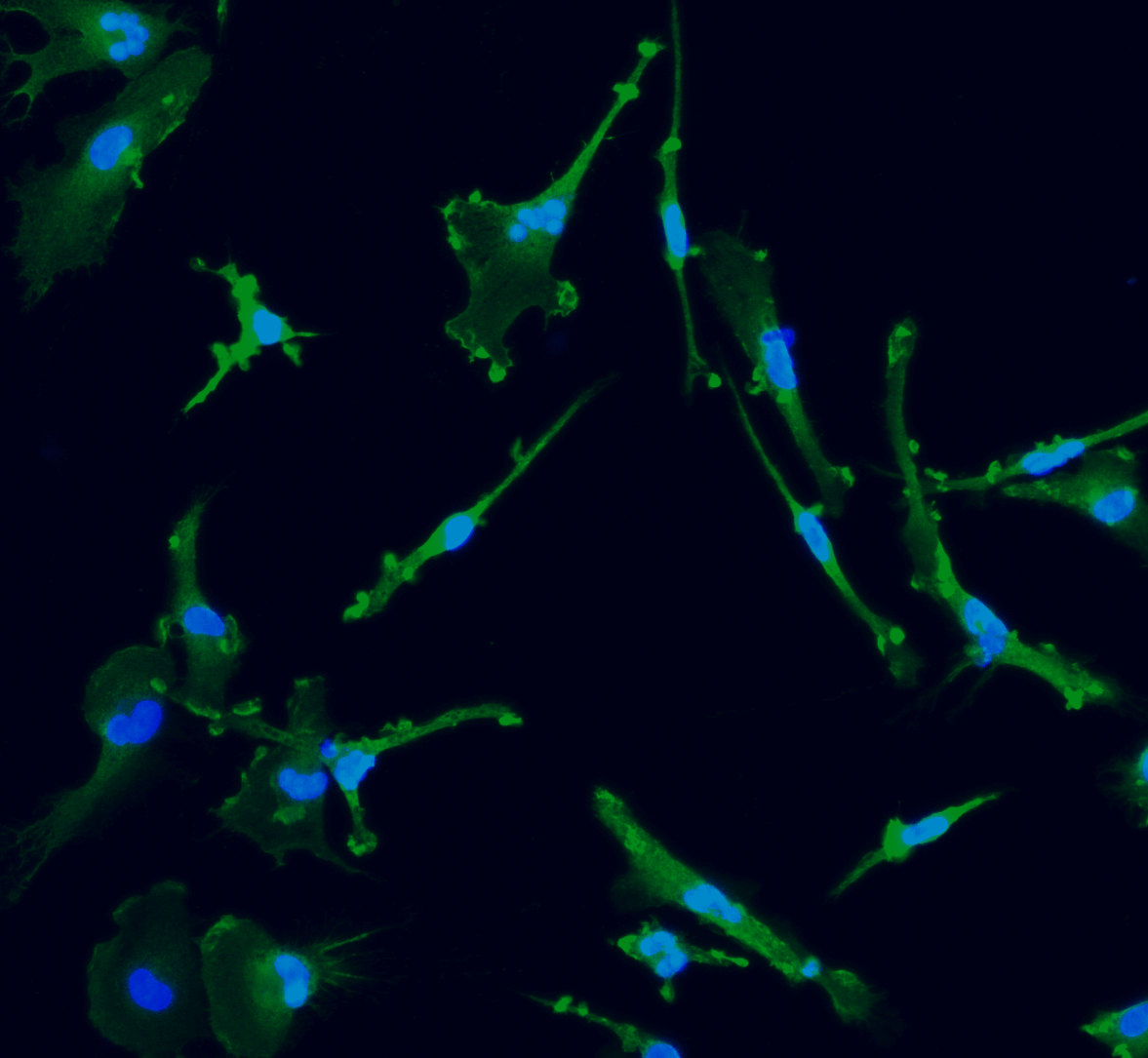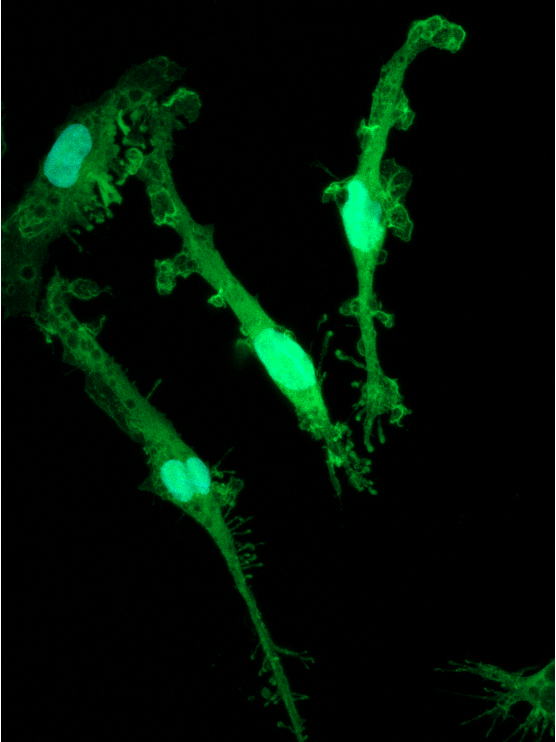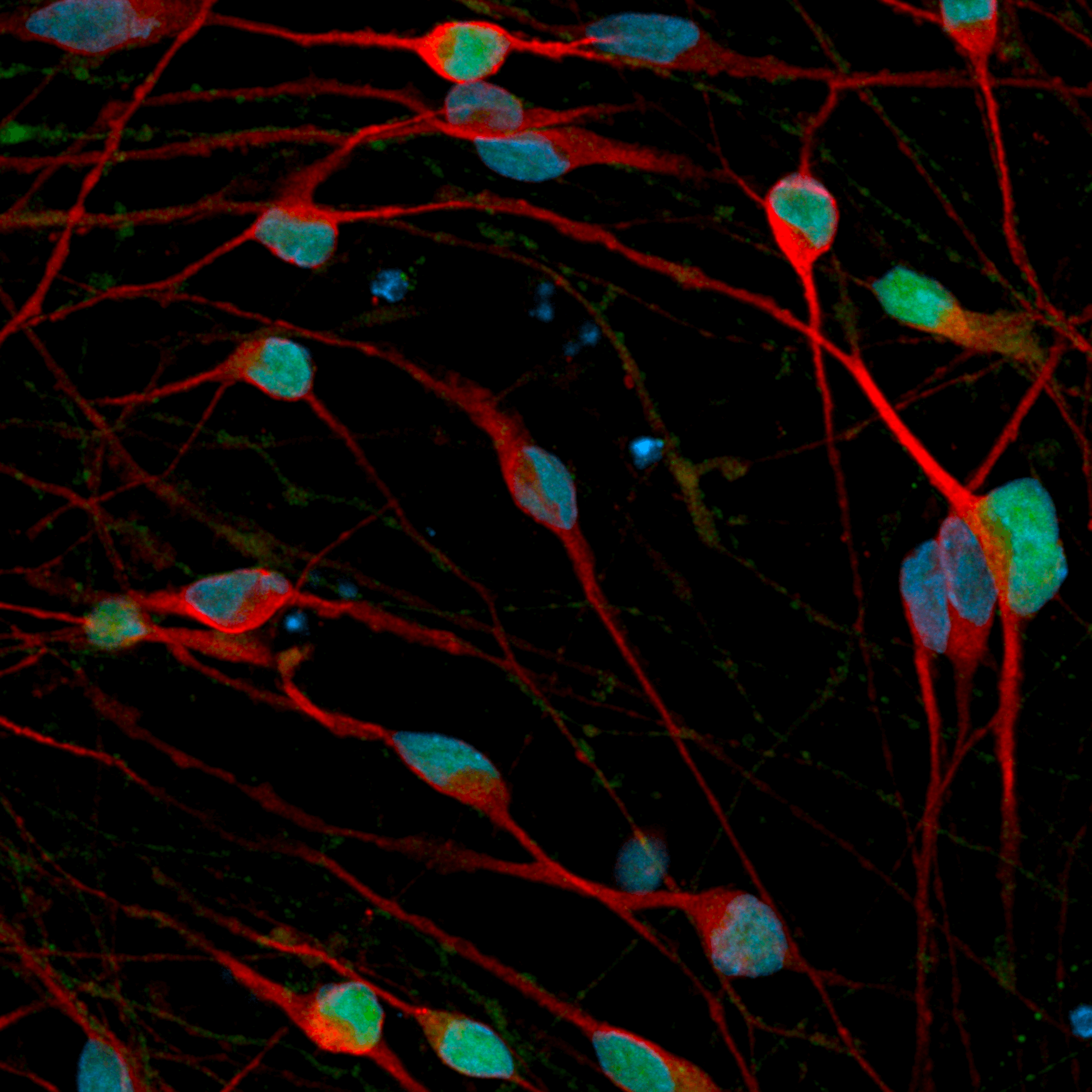











cat no | io6015
ioMicroglia P2RY12 null/WT
Human iPSC-derived microglia model
-
Cryopreserved human iPSC-derived cells powered by opti-ox, that are ready for experiments in days
-
Built to investigate the impact of P2RY12 knockout for neuroinflammation research
-
Consistently perform key phagocytic and cytokine secretion functions, and are co-culture compatible

Human iPSC-derived microglia for neuroinflammation research

Phagocytosis of ioMicroglia P2RY12null/wt is demonstrated comparably to the WT control and ioMicroglia P2RY12null/null
Phagocytosis was analysed at day 10 post-revival after incubation with 1 µg/0.33 cm2 pHrodo RED labelled E. coli particles for 24 hours +/- cytochalasin D control. The graph displays the proportion of cells phagocytosing E.coli over 24 hours. ioMicroglia P2RY12null/wt cells display a similar proportion of phagocytosis compared to the ioMicroglia P2RY12null/null and WT control. Images were acquired every 30 mins on the Incucyte® looking at red fluorescence and phase contrast. Three technical replicates were performed experiment.

Key cytokine secretion function displayed by ioMicroglia P2RY12 null/wt
Cytokine secretion was analysed at day 10 post-revival after stimulation with LPS 100 ng/ml and IFNɣ 20 ng/ml for 24 hours. This revealed that ioMicroglia P2RY12null/wt cells display a similar level of cytokine secretion compared to the ioMicroglia P2RY12null/null and WT control. Supernatants were harvested and analysed using MSD V-plex Proinflammatory Kit. Three technical replicates were performed per experiment.

ioMicroglia P2RY12 null/wt express IBA1 comparably to the genetically matched wild-type control
Immunofluorescent staining on day 10 post-revival demonstrates similar homogenous expression of the microglia marker IBA1 and ramified morphology in ioMicroglia P2RY12 null/wt cells compared to the genetically matched wild-type control, ioMicroglia Male. 100X magnification.

ioMicroglia P2RY12 null/wt show expected ramified morphology by day 10
ioMicroglia P2RY12null/wt cells mature rapidly and key ramified morphology can be identified by day 4 and continues through to day 10, similarly to the WT control. Day 1 to 10 post-thawing; 100x magnification.

P2RY12 null/wt heterozygous knockout confirmed by flow cytometry analysis
Flow cytometry analysis of ioMicroglia P2RY12 null/WT demonstrates heterozygous knockout of the P2RY12 gene translating to the protein level. Microglia purity demonstrated by >95% expression of CD45, CD11b and CD14 expression.
Vial limit exceeded
A maximum number of 20 vials applies. If you would like to order more than 20 vials, please contact us at orders@bit.bio.







